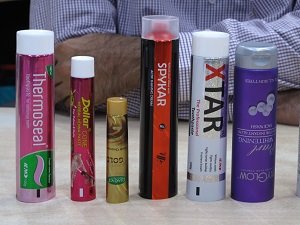India’s largest packaging company is one of the larger flexible packaging conglomerates in the world. Based in Noida in the Delhi National Capital Region, it has eleven manufacturing plants in India in addition to plants in the United Arab Emirates, Mexico, Egypt, Poland and the United States. Five of these global plants manufacture packaging films and laminates making the company one of the leaders in the segment.
Apart from its impressive size as the leading Indian flexible packaging material provider, Uflex has hither to been known as the company that drove the growth of the small flexible pouch that made it easy to distribute FMCG products in India at very affordable prices – from pan masala to shampoos to ketchup to confectionery. What is not so well-known or understood is that in order to make this packaging revolution happen at a time when the country had relatively low purchasing power, the company had to supply and manufacture, apart from the flexible packaging, several types of machines and equipment so that the packaging supply chain itself could be developed.
Apart from film and printed films, Uflex manufactured and supplied printing, converting and filling and sealing machines for its consumer product manufacturers and became what is now called in modern parlance ‘a solutions provider.’ Uflex Group president RK Jainsays, “Priorto 2010,wewere in the normal consumer product segments and although we innovated in films, laminates and printing with micro pouches and slide locking, Ziplock and re-closable flexible packaging, our endeavour was always to keep meeting the competitive challenges of the market place. We were able to scale up productively and export – this made us viable and sustainable.”
Jain adds that it was the domain knowledge and skill sets that the company was able to acquire, cultivate and nurture that made it different from others. “Anyone can buy the hardware but the trickiest part of packaging is in the human resource – in the soft skills. We are capable of achieving full speed and running at full capacity on our new machines because of a variety of factors and this makes a huge difference in our productivity.”
Jain is keen to speak about the more recent innovations of the group and how it is looking at the future, one in which he foresees strong double-digit growth for Uflex at least till 2020. He speaks about the new plant coming up in Sanand in Gujarat for liquid packaging. This too, he asserts will be based on the company’s mission to ‘innovate with a difference.’ The plant’s annual capacity is planned at 7 billion packs (700 crore packs) for liquid packaging. It brings the company full circle from packaging of solids, semi-solids to liquids. Jain says, with the commissioning of the Gujarat plant, Uflex will be able to provide packaging solutions for practically all FMCG consumer products except fizzy drinks. He claims that this solution will also contain innovation with a difference based on the group’s research and development.
From micro pouch to large bulk bags
Jain shows us two successful developments as examples of Uflex innovations with a difference. The first is the company’s successful work in the area of large bags for building materials and for pet food including exports. These are special laminates and packaging designed for bulk packaging that take into account the required attributes of their contents such as being leak proof, moisture proof, strength to weight and industrial filling. The bulk materials could be cement, plaster or wall putty or animal feed, pet food or any other material that requires unique laminates, high quality printing for branding and special design for filling and dispensing. As a total solutions supplier Uflex builds and provides the filling and sealing machines also for these unique solutions.

widely used for oral care and cosmetic products – in fact wherever lamitubes are gaining ground
Another Uflex innovation with a difference is the decorated and gravure printed flexi-lamitube being widely used for oral care and cosmetic products – in fact wherever lamitubes are gaining ground. This innovation takes advantage of many of the capabilities of the company in producing sustainable and easy to recycle films and laminates with properties such as transparency and unique value adds in terms of reverse printing, and the integration of holograms, Fresnel lenses for 3Deffects and security and anti-counterfeiting features.
RK Jain speaks about the future of packaging in India as well as the inherent strengths and growth plans of Uflex. He says that the fundamental driveris the development of a modern consumer society which requires packaged goods and logistics-friendly packaging with functionality, ease-of-use and other attributes such as being easy to fill, aesthetics and recyclability. The second driver for a company like Uflex is its proximity to customers with multiple locations, while the third is to further build the versatility of the company as a full solution provider for all products.
Jain concludes, “We have started to go into those kinds of packaging with greater value addition and better price realization. These are also less competitive since everybody cannot for instance make the kind of big bags that we are producing today. So we are looking at the change in profiling of our product group from the standard tonewtypes of products which are basically unique and quite complex for others to copy. I don’t say they cannot make these, but it will be difficult for them to make.”











